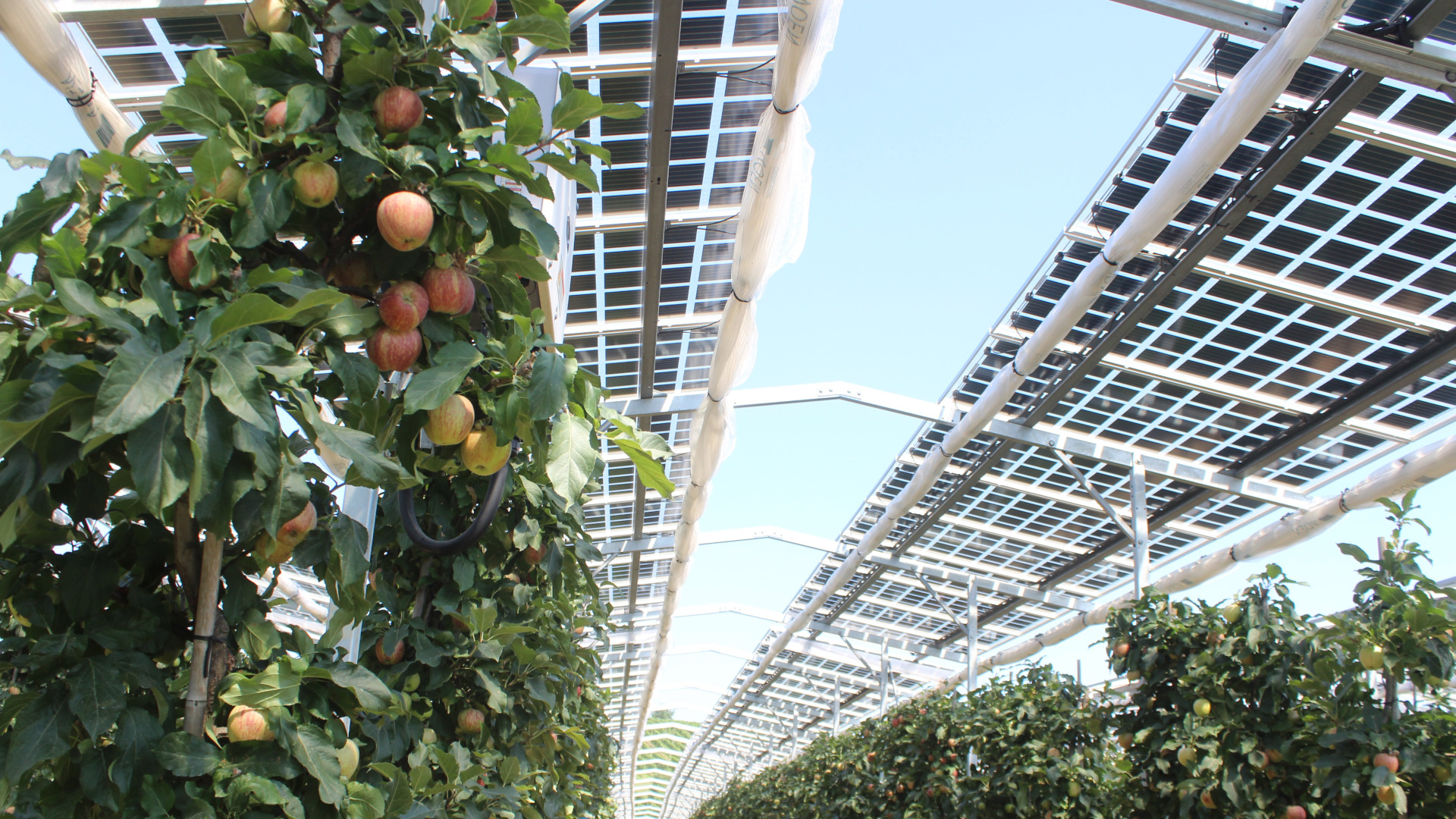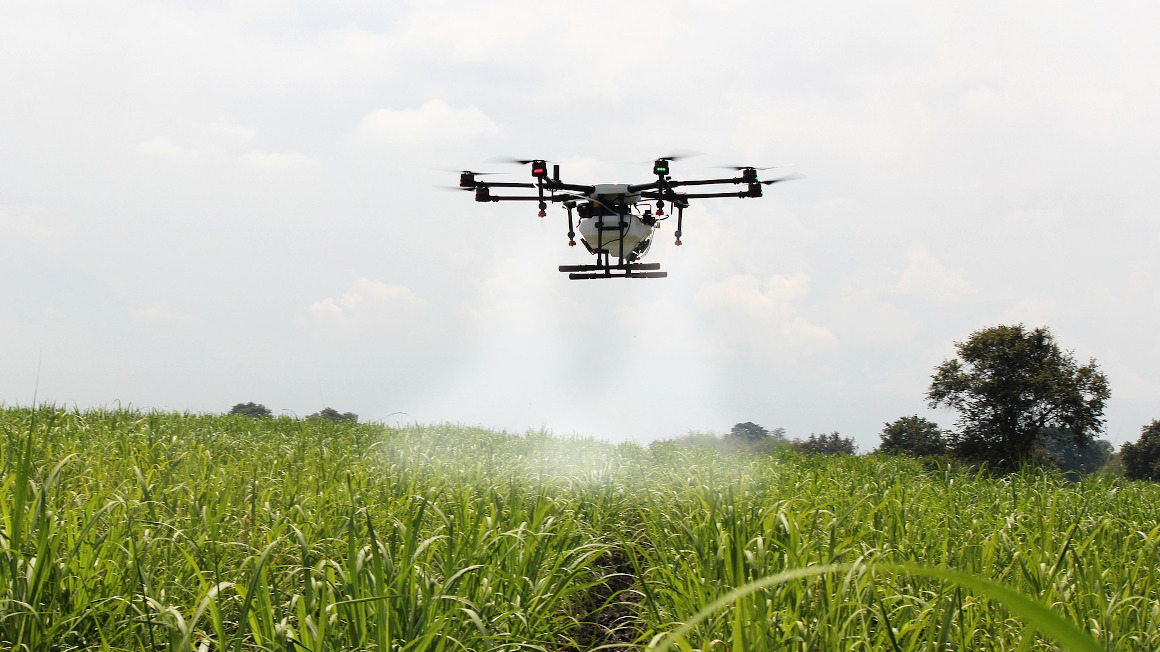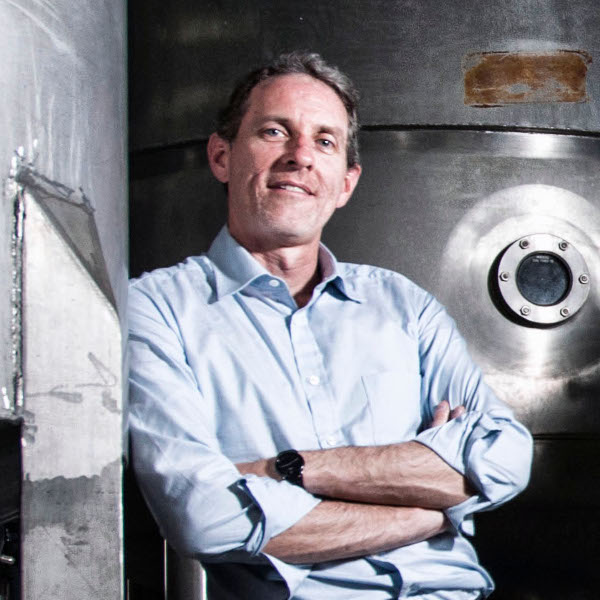The diverse potential of insects
With more than a million different species, insects are the most diverse group of organisms. This great diversity is also reflected at the molecular level, as insects harbour a gigantic spectrum of natural substances. In the course of their evolution, they have developed numerous active substances and enzymes to defend against pathogens and predators or to secure their food supply. This enables many species to utilise substrates that are difficult to break down and toxic to other organisms as food, but also to survive in extreme locations.
How humans use insect products
Humans have been utilising the unique natural resource of insects since the Stone Age. One prominent example is the honey bee, whose products are still used in many applications today. Honey is mainly consumed as a foodstuff, but can also be used in naturopathy for colds and to reduce inflammation in wound treatment. Beeswax is just as versatile. For centuries it has been used as fuel for candles. Today it is added to many cosmetic and pharmaceutical products or foodstuffs. Other industrially relevant products are traditionally obtained from insect raising and breeding: silk from the cocoons of the silkworm larva, shellac and dyer's lacquer from the lac insect or the carmine dye from the scale insect cochineal.
Insect biotechnology - also known as yellow biotechnology - involves the development and application of biotechnological methods to utilise insects or insect-derived molecules, cells, organs or associated microorganisms as products or services.
Over the past ten years, research and development work in the field of insect biotechnology has intensified considerably. Researchers are working on new active ingredients for medicine (e.g. antibiotics), sustainable methods for plant protection (e.g. bioinsecticides), applications for industrial biotechnology (e.g. raw materials and enzymes) and to provide sustainable alternatives for food and animal feed production.
Insects for a sustainable circular economy
Insects are adept at utilising almost any organic substrate (plant and animal), such as wood or carrion, as food. This also makes them interesting for the bioeconomy, as they can utilise organic residues as a food source and convert them into valuable products - a process known as bioconversion. In this way, insects enable closed material cycles and can contribute to a sustainable circular economy.
However, not all residues are suitable to be fed to insects. According to European law, insects are considered farm animals if they are kept for the production of food, feed or other purposes. Therefore, they may not be fed with certain materials such as manure, kitchen waste or unprocessed former foodstuffs containing meat or fish. In research, however, it is still possible to experiment with other substrates such as food waste.
Many researchers and companies are focussing on Hermetia illucens, the black soldier fly. It is well suited to producing proteins and fats from organic residues. These can in turn be used as animal feed in livestock farming and aquaculture or for industrial purposes. Research is currently underway to determine whether natural substances from insects can be used as a substitute for palm oil and petroleum-based chemicals in the food and cosmetics industries, for example. Studies are also being carried out into whether the excrement of the animals can be used as organic fertiliser or to operate biogas plants.
In 'insect farming', insects are multiplied in special reactors (biorefineries) on a tonne scale to obtain products and raw materials. Insect farms are sustainable, cost-effective and energy-efficient, which is why the insect business is growing worldwide.
Page 2 of 7
Source of protein for humans and animals
Insects are already on the menu in many parts of the world. As a protein alternative to meat, fish and soy, they are also becoming increasingly important in the food and animal feed industry in this country.
Insects in food and animal feed
Four insects are currently approved as food in the European Union: the yellow mealworm, the locust, the grain beetle larva and the house cricket. Since 2021, insects have also been approved as processed feed for pigs and chickens. A total of eight insect species may be used in animal feed. One of these is the black soldier fly Hermetia illucens. It offers a resource-saving alternative to imported protein-rich supplementary feed such as soy. It is particularly versatile in its food range and can be fed with plant waste. The research project "Sustainable and resilient cultivation of insects for innovative use in feed and food production - reKultI4Food" is investigating, among other things, the nutritional needs of soldier fly larvae, how they utilize nutrients and which side and residual streams of food production are suitable for their cultivation.
Ultimately, factors such as social acceptance and economic viability will also determine whether insect-based products can become established on the market. In the project "Holistic evaluation of alternative protein sources with special consideration of insects", a methodology is being developed to enable a comprehensive evaluation of the chances of success of new products and processes in food and animal feed production. Both research projects are part of the "NewFoodSystems" innovation space in the BMBF's "Bioeconomy Innovation Spaces" program - a project that is being funded with up to 20 million euros.
Insect protein instead of fishmeal in aquaculture
Insects have been officially approved to be used as a source of protein in aquaculture in the EU since 2017. Since then, numerous federally funded research projects have been launched to test insects as a source of protein for domestic edible fish or shrimp farming. Until now, fishmeal has often been used as feed in aquaculture, which contributes to overfishing of the oceans. As fishmeal can be contaminated with fish pathogens, antibiotics are also often used. The aim of the researchers is therefore to use locally produced, inexpensive byproducts - e.g. from agriculture - to breed insects and then feed them to animals in aquacultures instead of fishmeal. However, some plant components in agricultural side streams are difficult for insects to digest. Researchers at the Fraunhofer Institute for Molecular Biology and Applied Ecology are therefore investigating in the BMBF-funded project "SymBioÖkonomie" whether microorganisms can help decompose plant biomass and thus make it digestible for black soldier fly larvae.
Urban food production with the help of insects
The futuristic "Cubes Circle" research farm, which is part of the BMBF's "Agricultural Systems of the Future" funding guideline, was launched at Humboldt-Universität zu Berlin in 2022. Here, food is to be produced in closed modules in the city - where it will also be consumed. An insect factory, in which the larvae of the black soldier fly are farmed, will supplement modules for vegetable cultivation and fish farming. The protein-rich biomass from the "InsectCube" could be fed to fish in the future. The energy-rich water from the fish farm can in turn be used as fertilizer for the cultivation of tomatoes, for example. The tomato leaves and stems are then fed to the insects, creating a closed cycle without waste materials. Indoor production systems are also being tested in the "Food4Future" research project - also part of the "Agricultural Systems of the Future" project. Crickets co-cultivated with macroalgae, salt-tolerant plants and jellyfish are used to produce nutritionally valuable raw materials for innovative food products.
Sustainable shrimp farming with insect-based aquaculture
Another example of the sustainable production of food using insects is the pilot project "Insect-based sustainable aquaculture - InA", which is being led by Thomas Wilke from Justus Liebig University Giessen. Thousands of edible shrimp are to be bred with insect feed in Giessen this year. According to Wilke, domestic insect-based production is a revolution in aquaculture.
It could become a sustainable alternative to traditional shrimp farms in subtropical regions and at the same time offer more animal welfare for the shrimp. The Technische Hochschule Mittelhessen (THM) is also involved in the project, which is funded by the BMBF as part of the "BioBall" program. The project focuses on the use of "bioresources in conurbations". Accordingly, by-products from regional food production are to be used as feed in the insect farms.
Page 3 of 7
Insects in industrial biotechnology
Insects are a veritable treasure trove for the industry. The multitude of natural substances and enzymes that they - or microorganisms associated with them - produce have a wide range of applications. Researchers are investigating which enzymes can be utilised industrially and which natural substances are suitable as alternatives to palm oil or petroleum-based chemicals.
Insect fats as an alternative to palm oil
Due to their chemical similarity, insect fats could be a more sustainable alternative to tropical fats such as palm oil. Palm oil is used in the production of baked goods, cosmetics and detergents, among other goods. WWF Germany estimates that it is found in every second supermarket product. It is even used in biodiesel. However, the cultivation of oil palms brings with it many ecological and social challenges. In the InBiRa project - the insect biorefinery, funded by the Baden-Württemberg Ministry for the Environment, Climate Protection and the Energy Sector and the European Union as part of the ERDF funding programme - researchers from the Fraunhofer Institute for Interfacial Engineering and Biotechnology IGB are working with project partners to develop insect fats as a domestic source of palm oil and coconut oil. They are testing how insect fats can be converted into lubricants, fuels, biosurfactants or soaps. The proteins won from the insect breeding are also to be used for the production of wood adhesives, cosmetics, binding agents, paper coatings or packaging films.
Bio-lubricants from insect fat
The BMBF-funded BioLube project is focussing on the use of insect fat as a biolubricant. Researchers at the German Biomass Research Centre (DBFZ) are working with project partners to develop products based on insect fats as hydraulic oils, lubricating oils and special lubricating greases for a wide range of technical applications. Bio-lubricants can replace petroleum-based lubricants, particularly in environmentally sensitive areas such as forestry and construction, shipping and wastewater management. Currently, vegetable oils such as palm oil are mostly used for their production. The use of insect fats can further improve the environmental compatibility of biolubricants, as residual and waste materials are used in their production.
Insect chitin as a raw material for the textile industry
Chitin can be obtained in large quantities from insect breeding, as it is a building material in the animal's exoskeleton. Researchers at the Fraunhofer Institute for Interfacial Engineering and Biotechnology IGB are working on the BMBF-funded ChitoTex and Hydrofichi projects to utilise insect chitin as a source of chitosan. Chitosan is increasingly being used in the textile industry, for example to give functional clothing a water- and dirt-repellent coating. The natural substance offers a bio-based functional alternative to petroleum-based perfluorinated chemicals (PFCs). These environmentally harmful and toxic substances are currently used primarily for impregnating textiles.
Enzymes from insects and microorganisms
Enzymes from insects - or from microorganisms that live in and on insects - can break down substrates such as wood, textiles, animal organisms and waste materials. Researchers are therefore investigating their industrial application potential. In the bioresources branch of the Fraunhofer Institute for Molecular Biology and Applied Ecology IME, researchers led by Andreas Vilcinskas have joined forces with researchers from the Max Planck Institute for Chemical Ecology (ICE) in Jena. In the project "Application of Insect-associated Microorganisms in Industrial Biotechnology - AIM-Biotech", they investigated how the caterpillars of the clothing moth Tineola bisselliella eat and digest textiles and how the larvae of the soldier fly Hermetia illucens convert liquid manure, old frying fat or silage waste into fats and proteins.
They also specifically searched for new enzymes in the burying beetle Nicrophorus vespilloides. The beetle buries the carcasses of small mammals or insects in the soil and then uses them as food for itself and its offspring. Enzymes from its glandular secretions could be produced recombinantly and used for the bioconversion of slaughterhouse waste. Microorganisms from the intestines of wood-eating insects are also a source of new enzymes. One example are the bacterial symbionts in the intestines of termites, which have enzymes for breaking down lignocellulose. These wood-degrading enzymes are used, for instance, in paper and textile processing.
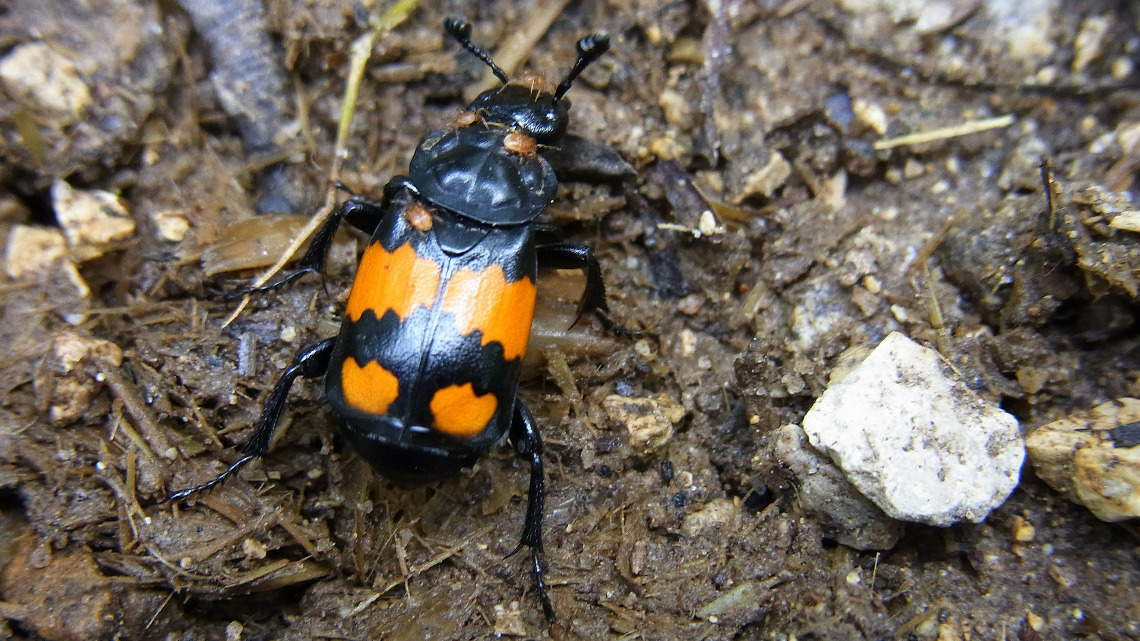
Biotech silk modelled on insects
Silk is a natural product of the silkworm Bombyx mori, which was domesticated by humans for silk production around 5,000 years ago. The common green lacewing Chrysoperla carnea also produces silk threads to secure its eggs to and thus protect them from predators. Researchers are working on the biotechnological production of silk in order to be able to produce it on a large scale. A team from the University of Bayreuth has succeeded in biotechnologically producing the silk proteins of the lacewing in bacteria. The synthetic threads are a highly attractive material for new technological applications, as they are as tensile and bend-proof as the natural model. Due to its biocompatibility, biotech silk is particularly interesting for medical applications. It can be used as a drug carrier, in biosensors or as a scaffold for tissue engineering.
Page 4 of 7
How an insect biorefinery works
Biorefineries are technical plants in which biomass is converted into a range of intermediate and end products, utilizing as much of it as possible. In insect biorefineries, insects convert biomass into technically usable higher-value products and thus contribute to the circular economy.
InBiRa - the new insect biorefinery
In 2022, the go-ahead was given for the establishment of the first German insect biorefinery - InBiRa. The joint project is being funded with a total of 3.8 million euros from the EU and the state of Baden-Württemberg. The pilot plant is being built at the Fraunhofer Institute for Interfacial Engineering and Biotechnology IGB in Stuttgart. Researchers at the Fraunhofer IGB are currently working on the construction of the insect biorefinery together with the University of Stuttgart, the Institute for Energy and Environmental Research Heidelberg (ifeu), Hermetia Baruth GmbH and PreZero Stiftung & Co. KG.
How does InBiRa work?
The larvae of the black soldier fly Hermetia illucens are bred en masse in the plant. One soldier fly lays up to 500 eggs. The larvae hatch quickly and convert organic residues and biowaste into fats, proteins and chitin within a few days as they grow. The larvae are processed into larval dry matter and their biomass is "fractionated". This means that it is separated into its fat and protein components - which each make up around 50 % of the total biomass - as well as a residual fraction (primary refining). These three fractions are processed through further refining steps into a variety of higher-value products (secondary refining). The research team is developing processes to convert the fat fraction into lubricants, fuels, biosurfactants or soaps. They are also investigating how the protein fraction can be used to produce wood adhesives, cosmetics, binding agents, paper coatings or packaging films. The chitin from the residual fraction is to be converted into high-quality chitosan, which can be used in the textile industry or for wastewater treatment. The project is investigating the feasibility of production and the marketability of various products of this type.
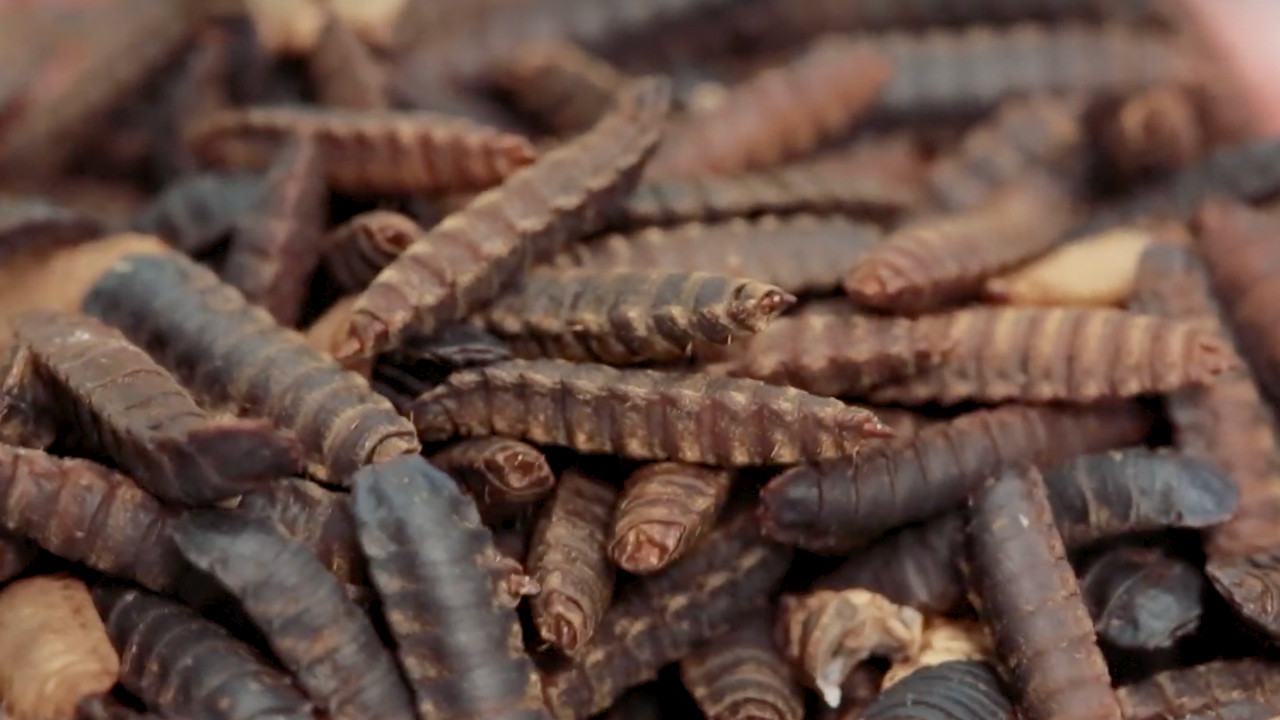
What is special about InBiRa?
The ecological benefits and the issue of sustainability are at the heart of the project. The entire production process is subjected to a comprehensive sustainability assessment and life cycle assessment. In commercial insect farming, specifically produced insect feed has often been used in the past. At InBiRa, waste materials from the region are to be used as feed for the first time - an important step towards a sustainable circular economy. The researchers are therefore also investigating how the changing composition of the feed affects the composition of the products, as the foods ending up in the organic waste garbage cans vary from day to day.
Another goal of the researchers is to make the best possible use of all waste materials generated during insect breeding. This includes the unutilized feed, which mainly consists of plant cellulose, the exuviae - which are shed when the larvae moult during the transition to the next larval stage - and the insects' excrement. Research is being carried out into how fertilizer or biogas can be obtained from these leftover substrates.
Page 5 of 7
Sustainable plant protection
Insecticides and biodiversity
Insect pests can destroy a large proportion of crops on cultivated land and in storage facilities. Chemical insecticides have been used for decades to control them. Such agents often work against all insects - with negative consequences for biodiversity. The decline in bee colonies and the associated loss of pollination services is also associated with the long-term and large-scale use of certain insecticides such as neonicotinoids. Three of these products have been banned from outdoor use across Europe since 2018.
Insect biotechnology for sustainable plant protection
The ban on proven insecticides, new invasive insect species and the increase in insecticide resistance make it necessary to develop and use new active ingredients and methods in crop protection. Alternative options for more sustainable, environmentally friendly and consumer-friendly control of insect pests are becoming increasingly important. Biotechnological methods can complement biological control strategies and make them more efficient. Strategies currently being researched include bioinsecticides, RNA interference (RNAi), sterile insect technology (SIT) and the use of viruses. What they all have in common is that they are designed to combat only selected insect pests. In this way, they contribute to species and environmental protection and do not pose a health risk to humans.
Bioinsecticides
Many insects produce poison cocktails to hunt other insects or to defend themselves. This arsenal of active ingredients is incredibly versatile and enables, for example, the development of sustainable bioinsecticides that are highly selective in combating insect pests without harming other species. For example, the Animal Venomics working group at Justus Liebig University Giessen, together with researchers from the LOEWE Center for Translational Biodiversity Genomics, is researching the venom of predatory flies such as the large wolf fly Dasypogon diadema.
Viral insecticides
The spotted drosophila (Drosophila suzukii) originally comes from Asia and was probably introduced to Europe in 2008. It attacks healthy fruit such as cherries or grapes shortly before harvest. Within a short space of time, this fruit fly has become a major threat to European fruit and wine growing. In the project "Neo-wine measures to maintain the health of soft fruit in organic cultivation", which is funded by the Hessian Ministry of Science and Art, a working group at the Technical University of Central Hesse is researching how the spotted drosophila can be combated virologically. Michael Wolff and his team are collaborating with researchers from the Fraunhofer Institute for Molecular Biology and Applied Ecology IME. They aim to produce specific viruses in insect cells that have been isolated from the spotted drosophila and can infect only this species. The long-term goal is to use the viral insecticide as an active ingredient against the spotted drosophila.
Sterile insect technology
The oriental fruit fly Bactrocera dorsalis and the peach fruit fly Bactrocera zonata also threaten European fruit and vegetable cultivation. The European Union wants to prevent the spread of both species at an early stage and is therefore funding the international research project REACT (Rapid elimination of invasive agricultural insect pest outbreaks by tackling them with Sterile Insect Techniques programs). The research consortium is coordinated by Marc F. Schetellig at Justus Liebig University Giessen. The strategy is based on the sterile insect technique (SIT), which has already been tested on another species of fruit fly. This involves releasing infertile conspecifics in order to minimize the reproductive capacity of a species. For this purpose, the harmful insect is bred in large quantities, sterilized and repeatedly released in the affected area. If females mate with infertile males in the field, there are no offspring and the population shrinks.
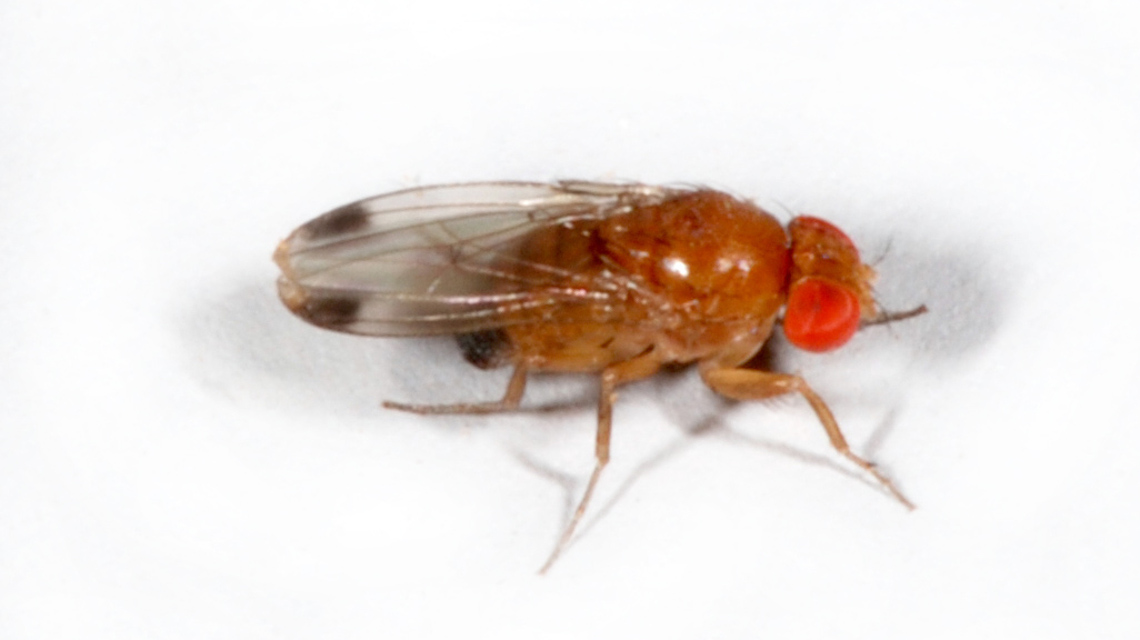
RNA interference
Another method of combating pests is RNA interference. To do this, the researchers first identify genes that are characteristic of one - and only one - insect species and are also essential for its survival. These genes are then specifically blocked with the help of RNA interference. Researchers at the Fraunhofer Institute for Molecular Biology and Applied Ecology IME are developing an RNA-based insecticide against the Colorado potato beetle, which is already being tested in field trials. As part of the BMBF-funded project "RNA PROTECT, RNA-based active substances for use in plant protection", a team from Martin Luther University Halle-Wittenberg (MLU) is further developing the technology for use against other harmful insects and fungi.
RNA interference is also being tested to combat vector insects such as the Asian tiger mosquito Aedes albopictus, which is currently spreading in Europe. It transmits viruses that cause diseases such as Zika or dengue fever in humans. Researchers at Justus Liebig University Giessen are developing methods to combat the spread of the tiger mosquito using RNAi.
Page 6 of 7
Applications for medicine
Insects or associated organisms are a veritable treasure trove for new active ingredients in medicine. Researchers are searching for active substances in the secretions of insects, in their "blood" - the haemolymph - or in their venoms. In medicine, insects or insect cells can be used both as animal models and for the production of recombinant proteins such as vaccines.
Antibiotics and virulence blockers
Due to the increasing spread of multi-resistant germs, the need for new antibiotics is growing. Only a few new active substances have come onto the market in recent decades. The large amount of research, the high development costs and the low profit prospects have led to many industrial companies withdrawing from antibiotics research. At the Sanofi-Fraunhofer Natural Product Center of Excellence in Giessen, researchers are looking for new active ingredients for antibiotic development. One of their endeavours has been to isolate antimicrobial peptides from the blow fly maggot Lucilia sericata.
The Asian lady beetle is also a source of new antimicrobial agents. A substance called harmonin, which is effective against both tuberculosis and malaria pathogens, has been isolated from its haemolymph.
Treatment strategies that do not aim to kill pathogens directly but to neutralise their pathogenicity or virulence factors are seen as a promising alternative to antibiotics. A novel inhibitor of bacterial metalloproteases from insects has a highly specific effect and inhibits the production of virulence factors in Pseudomonas aeruginosa, a bacterium that plays a particularly important role in lung infections. In the BMBF-funded project "Inhalable virulence inhibitors from insects for the treatment of lung infections (4-IN)", the Fraunhofer Institutes for Molecular Biology and Applied Ecology IME and for Toxicology and Experimental Medicine ITEM have jointly investigated the potential of novel active substances for the prevention and treatment of lung infections.
Animal models
The fruit fly Drosophila melanogaster is one of the established animal models in biomedical research. Compared to laboratory animals such as rats or mice, insects offer several advantages: Their use in research is faster and cheaper than animal experiments with mammals. Around 75% of the genes that can trigger diseases in humans are also found in insects. Goliath worms, the larvae of the tobacco hawkmoth, also serve as a model organism for human diseases. Last year, an international team of researchers from the Fraunhofer Institute for Molecular Biology and Applied Ecology IME and Justus Liebig University Giessen (JLU) reported that goliath worms can be used to research chronic inflammatory bowel diseases and to develop and test urgently needed new therapies.
Insect cell lines for vaccine production
Insect cells have been cultivated for many decades and can be used to test the toxicity and efficacy of drugs. Vaccines are also already being produced commercially in insect cells using the baculovirus expression vector system (BEVS).
Page 7 of 7
Yellow biotechnology - the research landscape in Germany
The LOEWE Centre for Insect Biotechnology & Bioresources (ZIB) is developing insects as a new bioresource for products with applications in medicine, plant protection and the food industry. The following research institutions are participating:
Other research institutions and projects
• Bundesinstitut für Risikobewertung BfR – BioInsectomy
• Deutsches Biomasseforschungszentrum DBFZ – BioLube
• Forschungsinstitut für Nutztierbiologie FBN – RüBio
• Fraunhofer Institut für Grenzflächen- und Bioverfahrenstechnik IGB – InBiRa
• Fraunhofer-Institut für Verfahrenstechnik und Verpackung IVV – Entomo Value
• Humboldt-Universität zu Berlin – CUBES Circle
• Leibniz-Institut für Agartechnik und Bioökonomie ATB – reKult4Food, AquaTech4Feed
• Leibniz-Institut für Gemüse- und Zierpflanzenbau (IGZ) e.V. – Food4Future
• Martin-Luther-Universität Halle-Wittenberg (MLU) – RNA PROTECT
• Max-Planck Institut für chemische Ökologie (ICE) – AIM Biotech
• Research Institute für Feed Technology (IFF) – Insektenprotein

